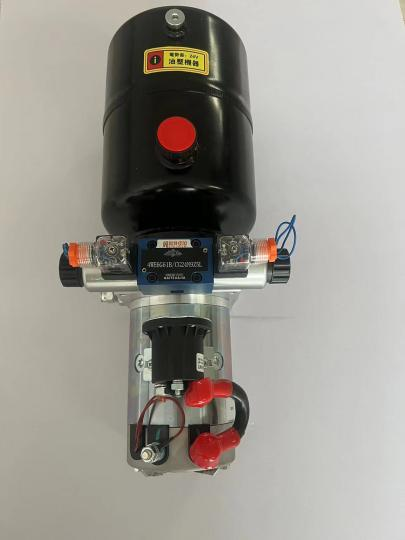Nov . 09, 2024 20:36 Back to list
Hydraulic Systems Featuring Pumps and Cylinders for Optimal Performance and Efficiency
Understanding Hydraulic Pumps and Cylinders Key Components of Fluid Power Systems
Hydraulic power systems have revolutionized various industries by providing efficient and powerful means of moving and controlling heavy loads. Central to these systems are hydraulic pumps and cylinders, which work together to convert mechanical energy into hydraulic energy and subsequently into linear motion. This article will explore the essential functions, types, and applications of hydraulic pumps and cylinders in modern engineering.
The Basics of Hydraulic Systems
Hydraulic systems rely on incompressible fluids to transmit power. The fundamental principle governing these systems is Pascal’s Law, which states that a change in pressure applied to an enclosed fluid is transmitted undiminished throughout the fluid. This principle underlies the operation of hydraulic pumps and cylinders, making them indispensable in applications where heavy lifting or precise movement is required.
Hydraulic Pumps The Heart of the System
Hydraulic pumps serve as the heart of a hydraulic system, responsible for converting mechanical energy into hydraulic energy. They draw hydraulic fluid from a reservoir and pressurize it, sending it through the system to hydraulic cylinders, valves, and other components.
1. Types of Hydraulic Pumps There are two primary types of hydraulic pumps fixed displacement and variable displacement pumps. Fixed displacement pumps deliver a constant amount of fluid with each rotation, while variable displacement pumps can adjust the fluid flow based on system demands, allowing for more efficient energy use in varying load conditions.
2. Working Principles The common working principles include gear pumps, vane pumps, and piston pumps. Gear pumps are simple in design and suitable for most hydraulic applications due to their reliability and efficiency. Vane pumps, on the other hand, provide a smoother flow and are often used in high-speed applications. Piston pumps can handle high pressures and are commonly used in industrial and mobile machinery.
Hydraulic Cylinders Translating Pressure into Motion
hydraulic pump and cylinder product

Hydraulic cylinders are the components that convert the hydraulic energy from the pump into useful mechanical work. They consist of a cylindrical barrel, a piston, and rod, all of which work together to produce linear motion.
1. Types of Hydraulic Cylinders Like pumps, hydraulic cylinders also come in various types. The most common ones include single-acting and double-acting cylinders. Single-acting cylinders extend or retract using hydraulic pressure on one side of the piston, while double-acting cylinders can apply pressure to both sides, allowing for more control and greater force in both directions.
2. Specifications and Performance The performance of hydraulic cylinders is measured by their bore size, stroke length, and pressure rating. Larger bore sizes can produce more force, while longer stroke lengths allow for greater movement. The pressure rating determines the maximum force the cylinder can handle, which is crucial for ensuring safety and reliability in applications.
Applications in Various Industries
Hydraulic pumps and cylinders are used across a vast range of industries due to their ability to generate immense force in compact spaces. Some common applications include
- Construction Hydraulic systems power excavators, backhoes, and bulldozers, allowing for efficient earth moving and material handling. - Manufacturing In manufacturing plants, hydraulic presses are essential for metal forming processes and assembly lines, providing precise control over production tasks. - Automotive Hydraulic lifts and jacks are used in automotive repair shops to raise vehicles for maintenance and inspections, showcasing the versatility of hydraulic systems.
- Aerospace In the aerospace industry, hydraulic systems control various functions, including landing gear deployment and flaps, demonstrating the critical nature of reliability in hydraulic components.
Conclusion
Hydraulic pumps and cylinders are fundamental components in the realm of fluid power technologies. Their ability to efficiently convert energy and control movement makes them invaluable across diverse industries. As technology advances, innovations in hydraulic components continue to enhance performance and reliability, paving the way for further developments in automation and engineering. Understanding their operation, types, and applications is essential for anyone involved in mechanical engineering or industrial applications, as these systems play a pivotal role in modern industrial operations. Whether lifting heavy loads or precisely controlling machinery, hydraulic systems remain a cornerstone of engineering excellence.
-
Fork Lift Power Units - Hebei Shenghan | Efficiency, Reliability
NewsJul.13,2025
-
1.5-Ton Turbocharged Cylinder-Hebei Shenghan|Hydraulic Solution,Energy Efficiency
NewsJul.13,2025
-
Auto Hoist Power Units-Hebei Shenghan|Efficiency&Industrial Lifting
NewsJul.13,2025
-
Double Acting Power Units-Hebei Shenghan|Hydraulic Solutions,Industrial Efficiency
NewsJul.13,2025
-
1.5 Ton Lifting Cylinder 70/82-40-290-535 - High-Performance Hydraulic Solution | Hebei Shenghan
NewsJul.13,2025
-
Fork Lift Power Units - Hebei Shenghan | Efficiency&Reliability
NewsJul.13,2025
